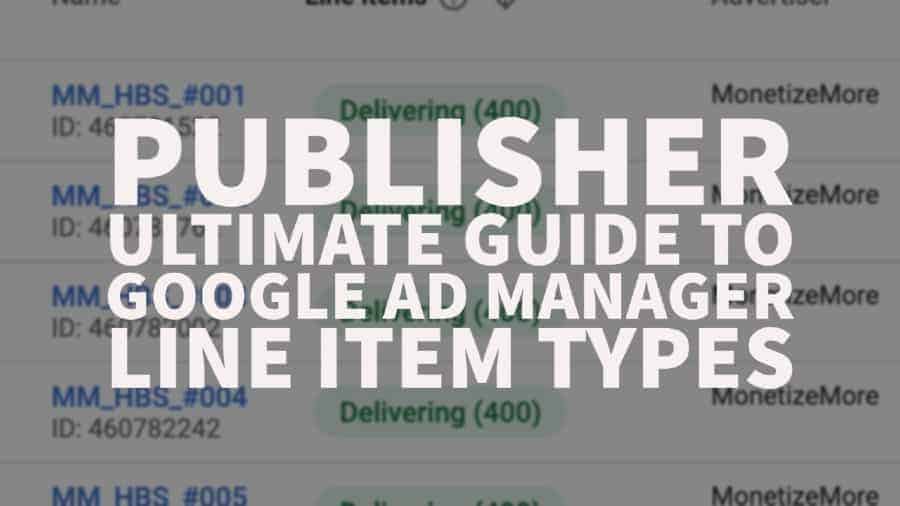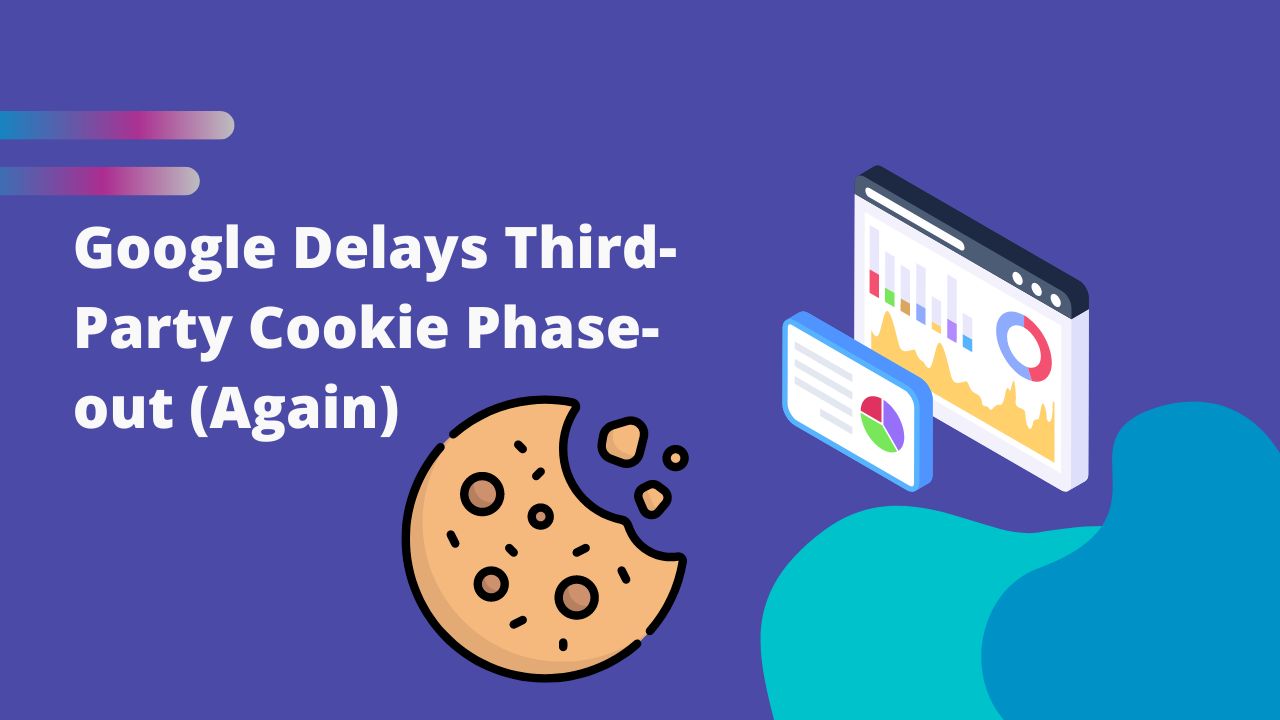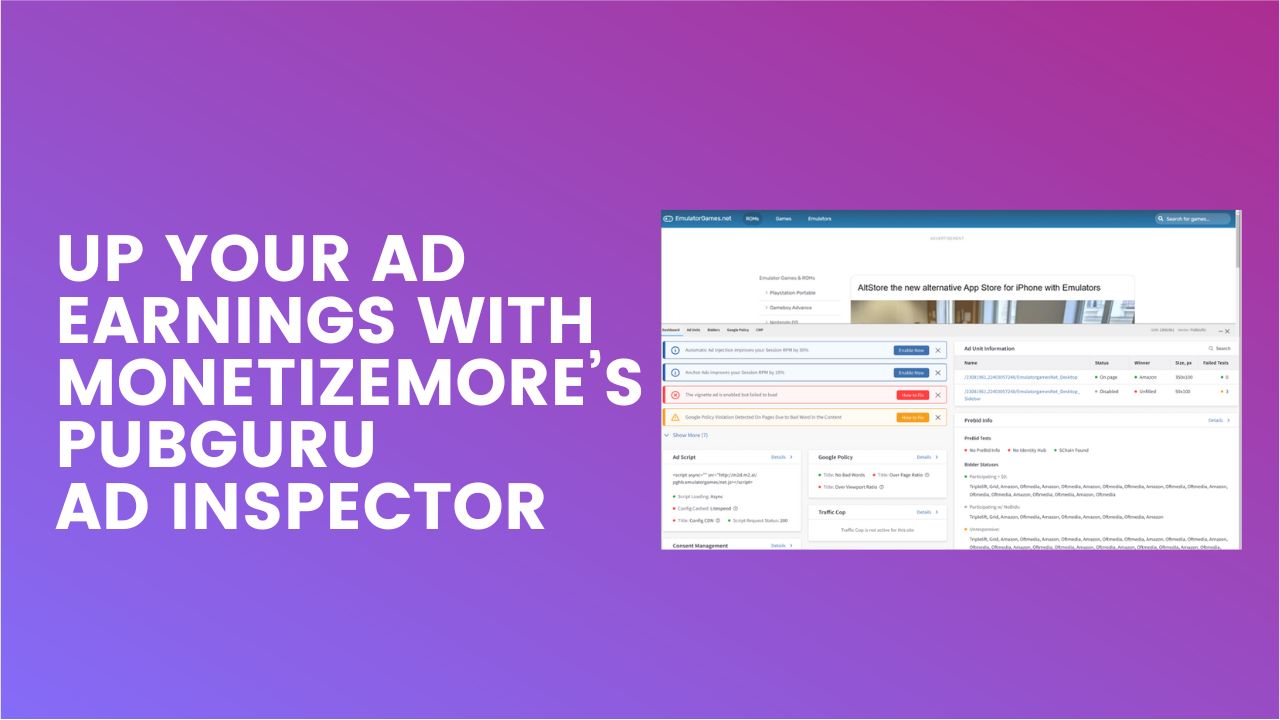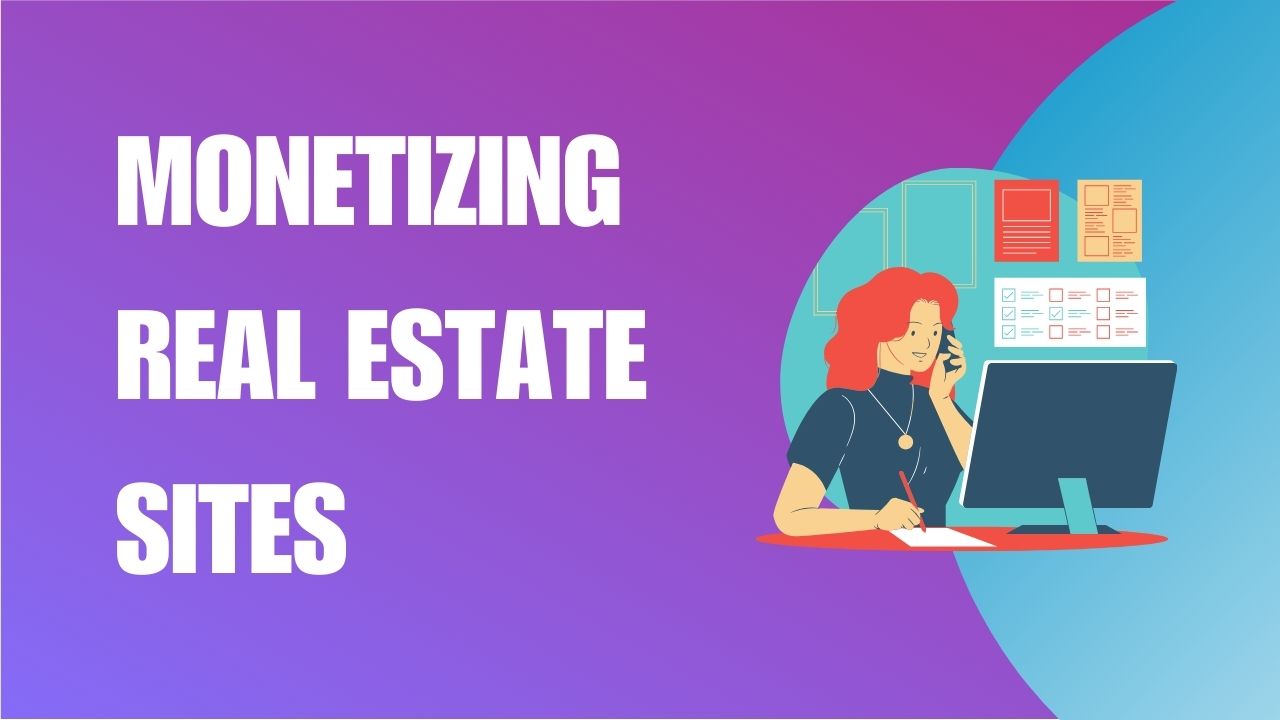
This post was most recently updated on January 18th, 2023
Line item types and priorities are where everything starts in terms of how a certain line item competes in the auction and its role in the ad stack. Many factors can impact ad selection in Google Ad Manager (GAM), like frequency capping, roadblock, exclusions, day parting. The other challenge for most publishers is, these terminologies in GAM are not necessarily beginner-proof. I mean, how often do we use the term ‘Sponsorship’ or ‘Standard,’ right?
This article will break down every nook and cranny of GAM line item types – what it is when to use it, and a bonus Ad Optimization pro tip section for each.
This line item serves based on the percentage of impressions and has the highest priority by default. When there are multiple Sponsorship line items with overlapping targeting, Google Ad Manager will allocate the impression based on the total percentage.
Example 1 (3 line items with overlapping targeting):
Sponsorship 1 @ 100%
Sponsorship 2 @ 50%
Sponsorship 3 @ 75%
==================
Total = 225%
GAM will allocate the impressions as follows:
Sponsorship 1 @ 100 / 225 = 44.44%
Sponsorship 2 @ 50 / 225 = 22.22%
Sponsorship 3 @ 75 / 225 = 33.33%
==================
Total = 100%
Example 2 (2 line items with overlapping targeting):
Sponsorship 1 @ 100%
Sponsorship 2 @ 100%
==================
Total = 200%
GAM will split the traffic 50/50:
Sponsorship 1 @ 100 / 200 = 50%
Sponsorship 2 @ 100 / 200 = 50%
==================
Total = 100%
Only use the Sponsorship line item when essential and if the price is right. When you receive an offer, run a Historical report in Google Ad Manager and pay attention to the average CPM you’ve been getting. Compare it to the offer on the table. Which one is higher?
Negotiate for a better deal in case you’re not convinced. The bottom line is, why trade a spot that’s been yielding around $5 CPM for an offer that will only pay $3.50 CPM?
This line item serves based on the quantity goal specified and has the second priority, next to Sponsorship, by default. If a Standard line item exists, “Enhanced Dynamic Allocation” is activated. This means that Google Ad Manager will temporarily assign a CPM value depending on the “satisfaction index” of the Standard line item. GAM will check how close or far it is from its delivery goal – considering the start and end time + quantity of impressions needed to achieve.
If it struggles to meet the goal, Google Ad Manager will assign it with a temporarily high CPM to get it ahead of others and serve the ad. If the satisfaction index is looking good, then the opposite happens – GAM assigns it with a temporarily low CPM since it doesn’t need to serve an ad yet.
All these are automatically calculated by GAM and cannot be manually set.
Use only when appropriate and if the price is right. When used for testing, determine the number of impressions you’re willing to risk and set that as your goal. Remember, the CPM rate or CPM value you specify in the line item will only affect reporting but not prioritization. This means that there’s a chance for GAM to serve this ahead of higher-paying line items, especially when it’s struggling to meet its delivery goal.
There are two ways you can enable AdSense backfill or Dynamic Allocation:
1) Ad Unit settings or
2) Line item type: AdSense.
Let’s break down the difference:
#1 – Ad Unit settings
Activation is quick and easy. You only have to tick ‘Maximize revenue of unsold inventory with AdSense’ in the ad unit settings

-Enables AdSense to run on Dynamic Allocation at the ad unit level.
-No control on targeting or impression caps, day & time parting
#2 – Line item type: AdSense
-It takes a bit of time and more steps to set up. AdSense should be first linked with GAM, then create a line item and select AdSense as the line item type.
-Can control ad serving with line item settings like creative rotation, day & time parting, frequency caps, target specific section of the inventory.
-Using AdSense to run on Dynamic Allocation means AdSense will compete in real-time against your other demand partners running in GAM and will only serve if it can pay the highest bid.
AdSense line item type has the same level of priority as that of the Ad Exchange line item. This means that if both exist with overlapping targeted inventory, GAM will select one randomly, regardless of the bid amount.
If you have a “primary” or “mapped” account, there are 2 ways you can run Ad Exchange (AdX) on Dynamic Allocation – Yield Group or Line item. If using a “linked” account, you only have one option – Line item.
Check out PubGuru University for a more in-depth discussion on ‘mapped’ versus ‘linked’ accounts.
Let’s break down the difference between Yield Group and Line item.
#1 – Yield Group
-Available only on a primary account
-Easy to setup
-Can specify targeting, but no control on frequency caps, schedule, creative rotation & delivery
-Can only use the default or mapped AdX account
#2 – Line item
-It takes a bit of time and more steps to set up. AdX should be first linked with GAM, then create a line item and select Ad Exchange as the line item type.
-Can control ad serving with line item settings like creative rotation, day & time parting, frequency caps
-Can use multiple AdX accounts for different parts of the inventory
-Auto-generate creatives
Ad Exchange running on Dynamic Allocation means it competes in real-time with your other remnant line items and only serves if it can pay the highest bid. Google has now transitioned to the first-price auction, which means you get the actual amount that an AdX buyer bids instead of just getting $0.01 more than the highest competing bid (second-price auction).
If your site is approved to run Google Ad Exchange, we highly recommend running it on Dynamic Allocation across your entire inventory. Why? Because Ad Exchange has the biggest pool of advertisers worldwide, and you also have the privilege to sell your inventory and name your price in the private marketplace. You can transact with different buyers without actually talking to them.
Don’t run AdSense on Dynamic Allocation alongside AdX because they will be on the same priority regardless of the CPM bid. If you’d like to A/B test and see which one performs better, set them both as a Sponsorship line item, targeting the same inventory, both at 100% impression goal. Give it at least a week or two, and once the test is over, retain only the winner and set to Dynamic Allocation priority again.
We have more details on how to set up A/B tests at PubGuru University.
It is important to run AdX across all your inventory so it can compete, and you get the best bid for every impression.
Similar to Sponsorship, the Network line item serves based on a percentage of impressions but is non-guaranteed. Network monetizes remnant inventory and will only serve if no Sponsorship or Standard line item exists.
If you closed a deal with a buyer and want to give them priority without the promise or guarantee of delivering a certain percentage of impressions, this can be an option.
Since Network is percentage-based, it will serve ahead of Bulk, Ad Exchange or AdSense, Price Priority, and House. Use only when the price is right – which means the CPM offer provides good reason to put them on a higher priority than the other remnant line items.
Run your report and look at the average CPM from other remnant line items. If you’re not 100% convinced with the offer, consider running them on Price Priority instead.
Like Standard, Bulk line item serves based on quantity or specific impression volume but is not guaranteed. Setting a quantity goal is like setting an impression cap to ensure delivery doesn’t go beyond that.
Depending on the targeting criteria, Bulk will only serve if no Sponsorship, Standard, or Network line item exists.
This line item is useful if you want to set a maximum number of impressions for a buyer who is not really concerned about guarantees.
Bulk is an absolute-based type of remnant line item. It will serve ahead of Ad Exchange or AdSense, Price Priority, or House. Do not run this line item type unless the deal will pay higher than what you’re already getting from other remnant line items.
If possible, use the Price Priority line item instead and set a daily or lifetime impression cap. This way, you can set the CPM rate to the amount offered and have it compete against AdX or AdSense, pushing the overall performance higher.
The CPM rate in the line item setting determines the priority in the auction. The higher the rate, the higher the order in priority. Using this ensures that the highest paying line item serves in every ad request. It also competes against AdX or AdSense Dynamic Allocation, so it technically sets a floor that AdX or AdSense needs to bid above to win. This tightens the competition, making Price Priority our favorite line item type next to Ad Exchange.
Price Priority also allows you to set impression caps – unlimited, daily, or lifetime.
“Rate” is the cost negotiated with the buyer, either CPM or CPD depending on line item type. “Value CPM” is optional but serves two purposes:
Without “Value CPM” specified, Google Ad Manager will instead use the “Rate” to serve the purposes mentioned above.
If you partnered with a new buyer and you need to rule out discrepancies during the first few days or weeks, set them up on Price Priority with a daily impression cap initially.
This line item type is also best used with ALL your demand partners competing against AdX or AdSense, so the CPM rates drive the auction pressure. Notice that even Prebid header bidding is setup as Price Priority in Google Ad Manager?
Optimize daily based on “True CPM.” This is calculated by:

“Total revenue” refers to the Ad Network’s actual NET revenue and NOT based on the Google Ad Manager revenue report. Doing this requires you to check the Ad Network dashboard to see actual earnings.
This strategy ensures that the best paying line item wins in every ad request and the competition is fair across the board.
House is the lowest ranking line item and only serves when no other higher priority line item can serve. It is treated as if they have a $0 rate and do not compete on price via dynamic allocation. It serves as a fall-back line item to prevent or minimize unfilled impressions.

You can use it to promote products you sell, other content on the site to increase page views, or display an image to avoid weird blank spaces when there’s no ad to serve. Instead of going unfilled, you are at least putting it to good use.
Do not use Google tags as it will be considered ‘invalid.’ Google prohibits using their tag as ‘House’ and could get you in trouble. You can upload an image creative instead and set the destination URL to another section or content of your site or the product you sell.
If you work with MonetizeMore, you can run AdSense Re-render instead. This is our proprietary technology that minimizes your unfilled impressions by using AdSense as a fallback in your ad stack. Your House line item should target your entire inventory, so you maximize every ad request that comes in.
MonetizeMore is a Google Certified Publisher Partner and has helped hundreds of publishers optimize their ad inventory. Are you ready to take your ad revenue to the next level? Sign up for a Professional account at MonetizeMore today!

Kean Graham is the CEO and founder of MonetizeMore & a pioneer in the Adtech Industry. He is the resident expert in Ad Optimization, covering areas like Adsense Optimization,GAM Management, and third-party ad network partnerships. Kean believes in the supremacy of direct publisher deals and holistic optimization as keys to effective and consistent ad revenue increases.

Paid to Publishers
Ad Requests Monthly
Happy Publishers



10X your ad revenue with our award-winning solutions.